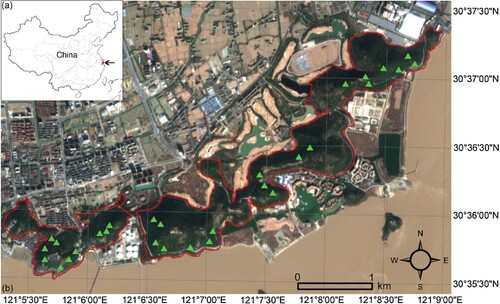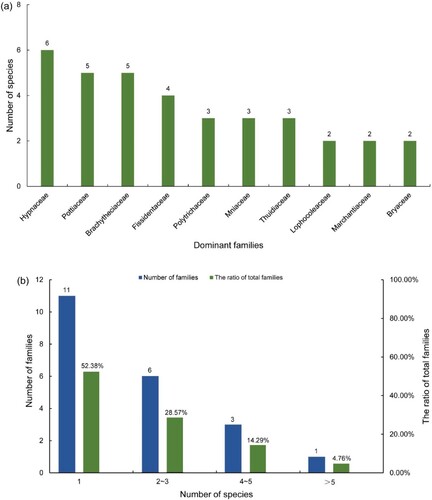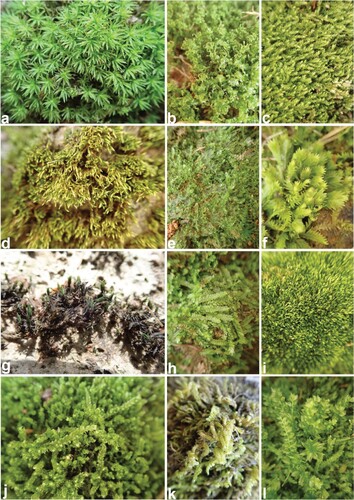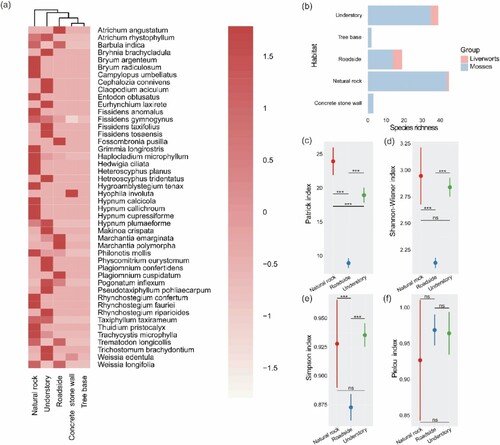Figures & data
Figure 1. (a) Location of JNFP in China; (b) The boundary of the JNFP (solid red line) and the location of the sampling site (green triangle). The original layer comes from Google Earth (https://www.google.com/earth/index.html).

Figure 2. Composition of Bryophytes in JNFP. (a) The number of bryophyte species contained in dominant families. (b) The number of families (contains different species numbers) and their ratio to the total number of families.

Table 1. Species checklist of bryophytes in the JNFP.
Figure 3. Bryophyte species newly recorded in Zhejiang Province. (a) Atrichum angustatum; (b) Atrichum rhystophyllum; (c) Bryhnia brachycladula; (d) Bryum radiculosum; (e) Cephalozia connivens; (f) Fissidens anomalus; (g) Grimmia longirostris; (h) Hetreoscyphus tridentatus; (i) Hygroamblystegium tenax; (j) Hypnum calcicola; (k) Hypnum callichroum; (l) Plagiomnium confertidens. The source of the species photograph was taken in the field in JNFP.

Figure 4. (a) Clustering distribution map of different bryophytes in different habitats. (b) Bryophyte richness in different habitats. (c) Comparison of bryophyte species richness index in different habitats. (d) Comparison of bryophyte Shannon-Wiener diversity index in different habitats. (e) Comparison of bryophyte Simpson dominance index in different habitats. (f) Comparison of bryophyte Pielou evenness index in different habitats.
Note: due to the other two habitat types (concrete stone wall, tree base) having very few species, we only analyzed and compared the diversity of habitats (natural rock, roadside and understory) with relatively high species. In addition, ns represents not significant; *** represents a 0.001 level of significance.

Data availability statement
The species classification data that support the findings of this study are available in Flora of China at http://www.iplant.cn/. All the specimens are preserved in the Herbarium, Institute of Botany, Chinese Academy of Sciences. The raw data that support the findings of this study are openly available in figshare at https://doi.org/10.6084/m9.figshare.23282828.v2.
